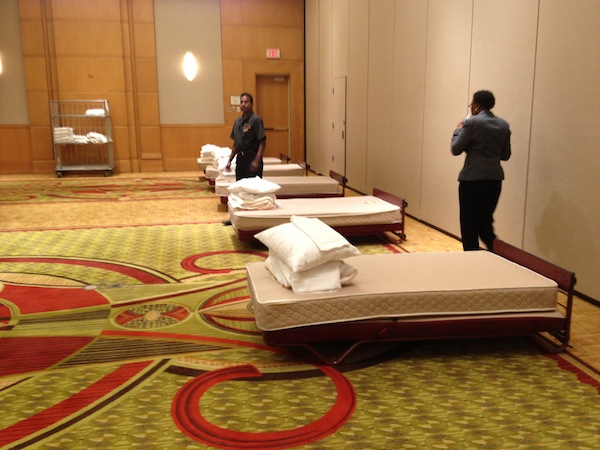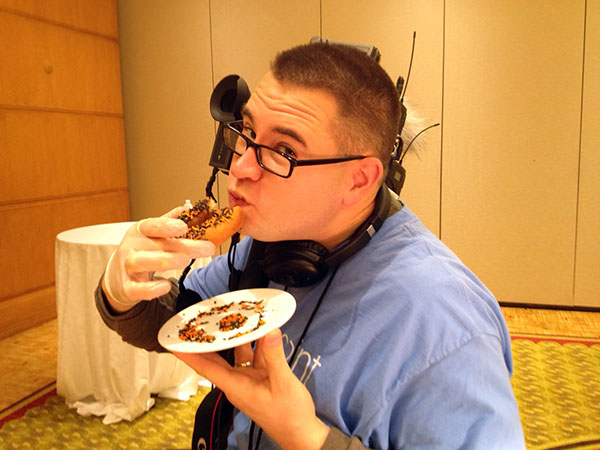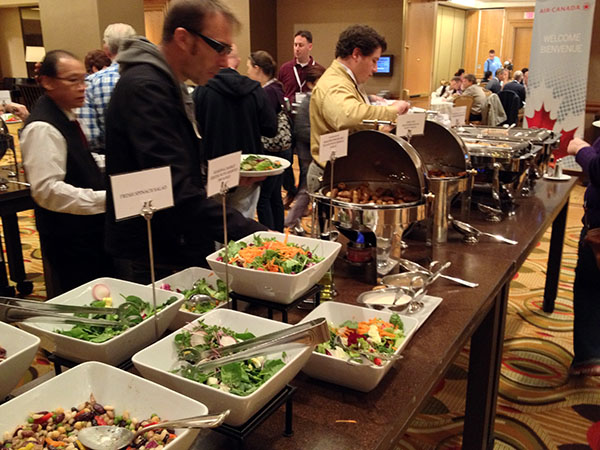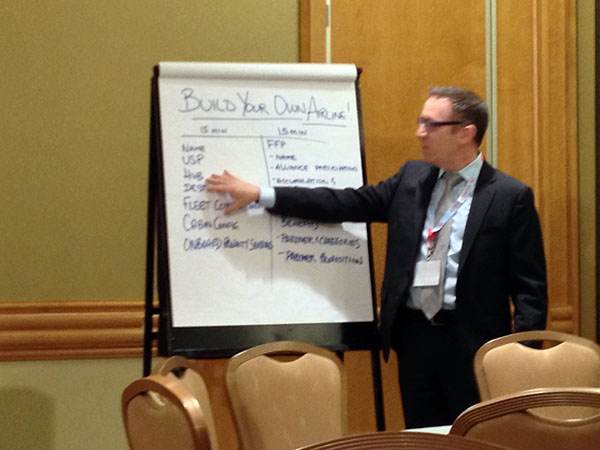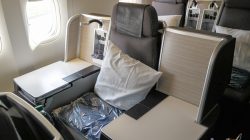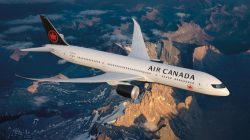After breakfast this morning, MegaDOers were treated to a behind-the-scenes look at how Marriott operates its hotels. Organized in a series of sessions, attendees could strategize room assignments before guests arrived, compete to see who made beds the fastest, or even make their own doughnuts.
(Did you know that Canadians eat the same number of doughnuts per capita as Americans, but they have more doughnut stores per capita? Tim Hortons up here is like Starbucks in the U.S.)
I arrived late and dropped in on the room assignment session. How do you determine who gets the suite when you have only 10 suites in a hotel with 500 rooms? And 100 of your guests are top-tier Platinum members? It’s not an uncommon situation in urban hotels that cater to frequent business travelers. We learned that Marriott keeps track of recent service issues and sometimes marks customer profiles for special attention on a future visit. They also do what they can to acknowledge special situations.
For example, consider a frequent guest who has a negotiated discount rate and stays four nights a week, every week. But then one time he or she brings along the family. Even with a low rate, that’s a unique situation where Marriott might have the opportunity to show its appreciation. The goal isn’t necessarily to provide upgrade on every stay, but to do so in situations where it would be highly valued.
At the end we got to participate in the Marriott Eaton Centre’s executive stand-up: a morning routine where they go over special events and certain VIP guests arriving that day, discuss comments and criticism, and basically ensure that everyone in the management team is communicating and working together. Attendees got to participate in a brainstorming activity during the session to come up with new ways to accommodate families with children. Don’t have kids? Even business travelers should care, as keeping parents and kids happy makes it less likely they’ll disrupt others. The Marriott team explained a few of the ways they approach this sensitive issue without stepping on parents’ toes.
Air Canada then stepped in with a hosted lunch. Unfortunately the visit to YYZ for a close-up look at airport operations was cancelled for a variety of reasons. But at least we didn’t need to get on another bus. Traffic in Toronto would probably have been awful coming back.
Instead, we had some more sessions at the Marriott with the Air Canada team, sharing tips about what helps airlines stand out the customer and offer superior service as well as what Air Canada could do to improve in some areas. My personal favorite was a creative session where we broke into teams to sketch out a business plan and loyalty program for a new airline.
I thought our team came up with a decent idea in 30 minutes: Premium economy and business class service focusing on the West Coast market, providing long-distance, high-traffic routes all operated by Boeing 787s. Our loyalty program would be called “Pop Stars,” and you could achieve elite status as either a Movie Star or a Rock Star! Tommy777 said I sounded like the new CEO of Chapter 11 Airlines, but that would apply to a lot of aviation executives. Next to space tourism, I think we had a better shot of succeeding. Just sayin’.

